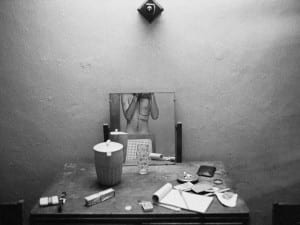The work of one of the most recognised American photographers, Lee Friedlander, is at Galerie Thomas Zander, Cologne. Featuring pieces taken over the course of the past five decades the show reflects on modern everyday life in Friedlander’s characteristic style of black and white photographs. Regarded as one of most significant critical observers of the American way of life, his work gained international acclaim from the 1960s onwards.
Curated by John Szarkowski, The Human Clay documents Friedlander’s influence on the visual vocabulary of subjective documentary style. Many of his pieces are amongst the icons of American photography, thriving in public collective memory, and becoming contemporary documents of our time.
In Friedlander’s most recent series contains thematic images that consider how people respond and are illuminated by their surroundings. These particular pieces have been sequenced by Friedlander from his own archive. Providing an intriguing and perceptive glance into the everyday, snapshots from the street are a representation of the iconography of American Life. The result both alienates and opens up dialogues with its viewer.
Rigorous cropping, unfamiliar angles, frame-in-frame, and multiple reflections are all techniques found in Friedlander’s oeuvre, becoming characteristic of his work. These methods are also through which his radically reinvents the medium’s aesthetic conventions. The intricate compositions often have a sense of distortion, resulting from photographing from rear-view or side mirrors of cars, this in turn offers a unique view on suburbia and its social developments.
Lee Freidlander’s Street: The Human Clay, Galerie Thomas Zander, Cologne, until 4 February. Follow @Aestheticamag for contemporary arts and culture.
Credits
1. Lee Friedlander Seattle (1967). Courtesy of the artist and Galerie Thomas Zander.





